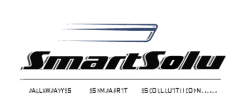Pipe and tubing
Pipe and tubing are used when rigid lines are preferred. No matter which conductor is used, certain requirements must be met. The line must be large enough to carry the flow required, and it must be strong enough to withstand internal pressures.
Line size can be determined from the amount of fluid that must be carried and the maximum velocities at which the fluid may travel. Normally, good design practice dictates that fluid velocities should not exceed:
- Pressure lines -- 10 to 15 fps.
- Short pressure lines -- to 20 fps.
- Inlet or suction lines - 2 to 5 fps.
To determine the required wall thickness of pipe and tubing, apply this basic equation:Tt=pdoM/2S, where p = pressure, psi; do = outside diameter, in.; M = safety factor; and S = material tensile strength, psi.
Pipe selection: Pipe generally costs less than tubing, and is normally used where:
- The pipe can be connected directly to pipe-threaded connections on system components.
- Disassembly is improbable or very infrequent.
- Large volumes of fluid must be handled, or where the line is long and straight.
Outside pipe diameter conforms to the corresponding series for pipe threads. Therefore, the outside diameter of each nominal size remains constant regardless of wall thickness. Today, the range of wall thicknesses available provides an equivalent range of inside diameters. Inside and outside diameters in nominal pipe sizes are listed in any standard reference source.
The pipe schedules most commonly used for hydraulic systems are schedule 40, nearly equal to the former "standard" designation; schedule 80 (formerly extra heavy); and schedule 160 (somewhat lighter than the former double extra heavy). Wall thickness tolerance for all commercial quality pipe is +12%.
Experts recommend that the following safety factors be used for noncritical applications:
- 6 for systems in which hydraulic shock, vibration, and extra stress are not expected.
- 8 for average system conditions.
- 10 for systems where considerable pressure shock or mechanical abuse is expected.
Tubing selection: Tubing is stronger and neater than pipe, and has a wider variety of fittings. Whereas pipe is relatively rigid and unbendable, tubing is easily bent into forms required for a system. Four common materials are normally used for tubing.
Steel tubing is the only type permitted by JIC standards without restrictions. Both seamless and electric-welded tubing meet requirements.
Copper tubing is restricted by JIC standards to low-pressure stationary applications and air circuits because it acts as an oil-oxidation catalyst and tends to work harden when flared. In addition, copper tubing has poor resistance to vibration.
Aluminum tubing of seamless quality has good bending and flaring properties and is approved by JIC for low-pressure tasks.
Plastic tubing is made from four basic materials: PVC, polyethylene, nylon, and PTFE. PVC can be used for pneumatic lines at pressures to 125 psi with continuous temperatures to 100¡ãF. It can be used with compression tube fittings designed for plastic tubing and has excellent abrasion resistance, but loses flexibility below 30¡ãF.
Polyethylene tubing is used for liquids and gas lines at temperatures from -60 to 160¡ãF. Compression fittings are acceptable.
Nylon tubing is used for pneumatic lines and low-pressure hydraulic lines to 250 psi. It is useful at temperatures from -60 to 200¡ãF. Nylon has good impact and abrasion resistance but some nylons can be damaged by moisture.
PTFE tubing can be used to 400¡ãF and 1,000 psi in certain sizes.
Tubing sizes are designated by a dash system in which the number given is the numerator of a fraction listed in 16ths of an inch. For example, -- 12 tubing has a 12/16-in. OD. Hose sizes are similarly designated, except that the dash number refers to ID rather than OD.
Wall thicknesses of metal tubing can be calculated from the equation given earlier. Use the safety factor of 4 for aircraft and missiles and for industrial, stationary, noncritical applications with minimal shock and abuse; 6 for average industrial applications with normal vibrations and impulse shock; 8 for JIC standard applications and for systems exposed to severe hydraulic and mechanical shock and abuse.
